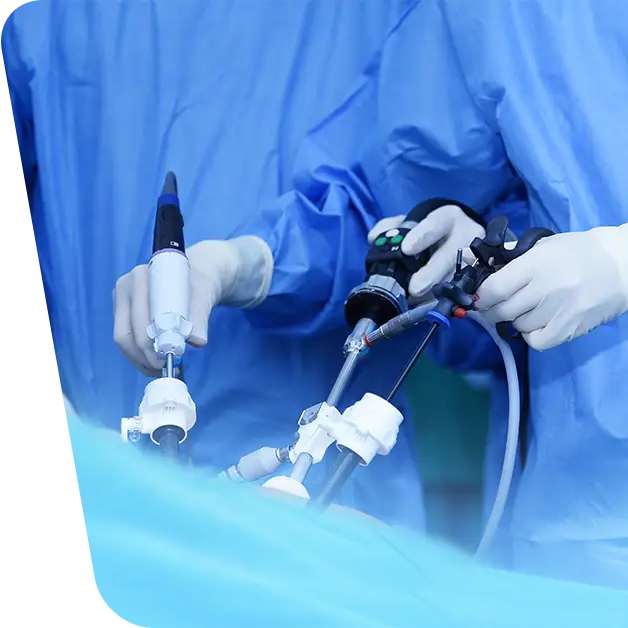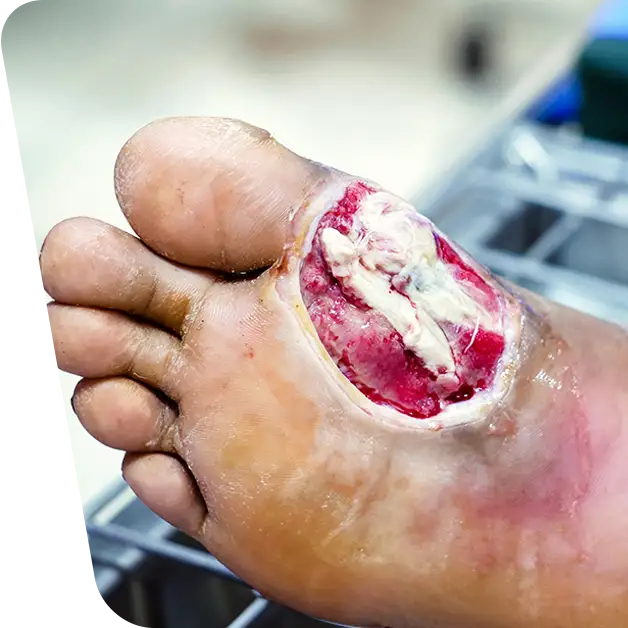Table of contents
ToggleWhat is laparoscopic surgery?
Laparoscopic surgery, also called “minimally invasive” surgery, is a specialized and advanced technique compared to traditional procedures for performing surgery.
In a traditional “open” procedure, the surgeon uses a single incision of a few centimeters to approach the site targeted for surgery. In contrast, in laparoscopic surgery, several incisions of no more than 0.5-1 cm are used, called a ‘port’, through which specialized tubular instruments known as a ‘trocar’ and a special camera called a laparoscope are inserted.
What is the purpose of laparoscopy?
In the past, laparoscopic surgery was commonly used for gynecological surgery or gallbladder pathologies. In the last decade, the use of this technique has expanded to intestinal surgery because of its many advantages and the increasing risk of complications. Most operations can now be performed laparoscopically.
Usually, a problem in the abdomen or pelvis is solved with this type of surgery. Among the most commonly performed are:
- Removal of a cyst, polyp or abscess.
- Biopsies or exploratory surgery to observe structures for diagnostic purposes.
- Removal of blood clots.
- Repairing tears in various tissues.
- Gynaecological interventions to treat ovarian pathology or fallopian tubes.
- Cholecystectomy/appendectomy (removal of organs);
- Resection of tumours.
Laparoscopic surgery is increasingly common because of its advantages:
- Less pain than traditional surgery.
- Rapid recovery.
- Short hospital stays.
- Absence of scars or smaller scars.
- Reduced trauma to the abdominal wall.
How do you prepare for laparoscopic surgery?
Before undergoing laparoscopic surgery, you will need diagnostic tests to confirm the need for surgery. These may include non-invasive maneuvers such as X-rays, ultrasounds or slightly more invasive or intrusive maneuvers such as endoscopies or colonoscopies.
Pre-operative testing might also include a haemo-leukogram to measure figurative elements in the blood, blood biochemistry tests, liver enzyme determinations and electrocardiogram. Once the tests confirm you can have the operation, your doctor will give you all the information about it, including the location of the incisions, the anticipated recovery period, and any limitations you might hit in your recovery days.
Before the day of surgery you should refrain from consuming food and fluids.
In terms of treatments taken, you will need to stop or decrease doses of blood thinners or anti-inflammatory drugs for a few days in order to prevent the risk of bleeding. Depending on the procedure, you may be advised to take oral antibiotics beforehand to decrease the risk of infection.
It is important, however, that you take them with your doctor’s consent so that you do not develop unnecessary resistance to those antibiotics.
Recovery after laparoscopy
Once the operation has been completed, you will remain under observation for several hours before discharge. Your vital signs will be monitored, such as pulse, blood pressure and respiratory rate, and any signs of abnormal reaction to the anesthetic. In some cases it may be necessary to stay overnight for observation. Discharge time varies from patient to patient and depends on general health, the type of anesthetic used and the body’s reaction to the procedure.
A few days after the procedure you will feel moderate, throbbing pain in the incisions, for which your doctor may prescribe painkillers. Although bothersome, this pain usually improves from day to day. Shoulder pain is also common.
During the procedure, to ensure a better view of the abdominal cavity, a quantity of carbon dioxide is introduced into the abdominal cavity to inflate the abdomen to create more space. This gas can irritate the diaphragm, the muscle that separates the chest from the abdominal cavity and shares a common nerve with the deltoid (shoulder muscle) on the same side.
Bloating can also occur as a result of using this gas. However, any discomfort should disappear within a few days.
As for everyday activities, you can return to whatever you were doing before in about a week. For a speedy recovery, it is recommended to:
- Be active as soon as possible to reduce the occurrence of blood clots.
- Get more sleep than usual.
- Wear loose clothing.
You may also have other problems, including difficulty sleeping, pain and fatigue. Be sure to call your doctor’s office if these problems don’t improve in a few weeks.
Diet after laparoscopy
Constipation may occur after gastrointestinal surgery or as a side effect of opioids (painkillers) . Depending on the type of laparoscopic surgery, you may be recommended dietary restrictions or medications to prevent constipation.
It is important to drink the same amount of fluids as before the operation. On the first day, you can consume food in liquid form such as apple juice, ginger, soup, biscuits or toast to avoid stomach upset. Try to stay away from citrus juices such as orange juice and tomato juice. Over the next few days, you can gradually add foods and return to your regular diet.
Are there risks associated with laparoscopy?
Although substantially reduced, risks and complications arising during or after a laparoscopic procedure may still occur in some cases. Some of the most common are hemorrhages, infections or damage to abdominal organs.
After the procedure it is important to be vigilant for signs of infection. Contact your doctor the moment you notice one or more of the following:
- Fever or chills.
- Abdominal pain that intensifies.
- Redness, swelling or discharge from the incision.
- Nausea and vomiting.
- Persistent cough.
- Dyspnea (shortness of breath);
- Inability to urinate.
- Dizziness.
There is a risk of organ damage during examination and manipulation by laparoscope. Thus, blood or other fluids could appear in the virtual spaces of the abdomen if one of the organs is pierced and requires surgery to relieve the defect.
Laparoscopic general surgery is a particularly important section of the Venart clinic.
Surgeries are performed by doctors with extensive experience, specialized in renowned clinics in Europe, USA and Israel.
Thanks to innovative medical techniques, many conditions are treated by minimally invasive (laparoscopic) methods. Thus, more than 60% of patients can be treated on an outpatient basis.







